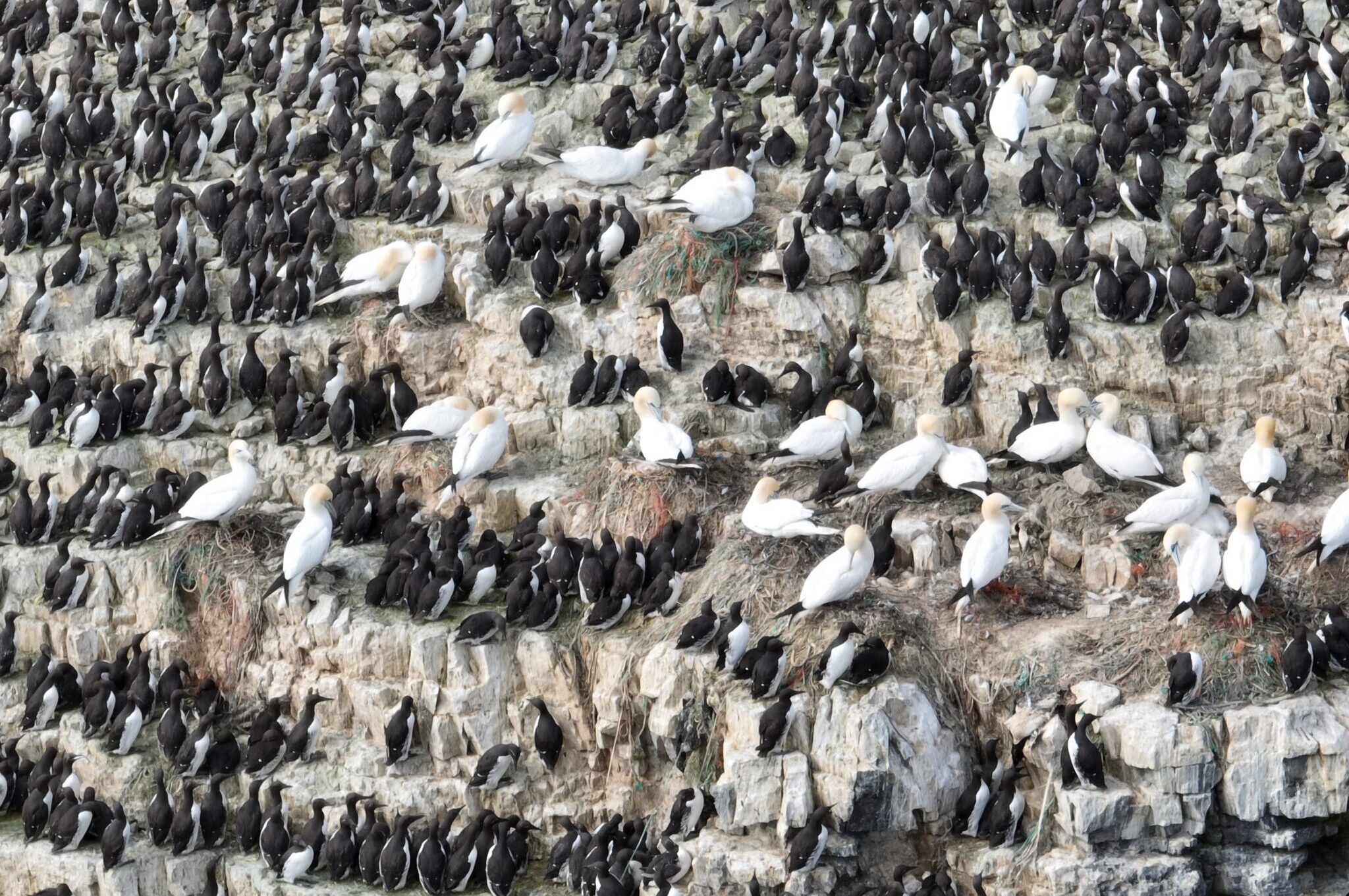Better understanding of population dynamics in Northern gannets
Mathematical models are important tools used to compare different scenarios that can increase our understanding and improve our predictions of seabird populations. In this study, models based on a century of colony census data on breeding Northern gannets (Morus bassanus) from the Northeast Atlantic were used to gain better insight in the gannet’s metapopulation regulation.
Problems with metapopulation models
Density-dependent feedback is recognized as an important regulatory mechanism of population size. Taking the spatial scales over which such feedback operates into account has advanced our theoretical understanding of metapopulation dynamics. Yet, metapopulation models are rarely fit to time-series data and tend to omit details of the natural history and behaviour of long-lived, highly mobile species such as colonial mammals and birds.
Seabird metapopulations consist of breeding colonies that are connected across large spatial scales within a heterogeneous marine environment that is increasingly affected by anthropogenic disturbance. Currently, we know little about the strength and spatial scale of density-dependent regulation and connectivity between colonies. Thus, many important seabird conservation and management decisions rely on outdated assumptions of closed populations that lack density-dependent regulation.
Comparisons of metapopulation regulation at different scales
Researchers in SEAPOP contributed to an investigation of metapopulation dynamics and connectivity in an exemplar seabird species, the Northern gannet, using more than a century of census data from breeding colonies distributed across the Northeast Atlantic. These data were fitted to a novel hierarchical Bayesian state-space model, to compare increasingly complex scenarios of metapopulation regulation through lagged, local, regional, and global density dependence, as well as different mechanisms for immigration.
Models with conspecific attraction fit the data better than the equipartitioning of immigrants. Considering local and regional density dependence jointly improved model fit slightly, but importantly, future colony size projections based on different mechanistic regulatory scenarios varied widely: a model with local and regional dynamics estimated a lower metapopulation capacity and consequently higher present saturation than a model with local density dependence.
Underlines the importance of regional dynamics
The findings of the study suggest that metapopulation regulation in the gannet is more complex than traditionally assumed and highlight the importance of using models that consider colony connectivity and regional dynamics for conservation management applications guided by precautionary principles. The study advances our understanding of metapopulation dynamics in long-lived colonial species, and the applied approach provides a template for the development of metapopulation models for colonially living birds and mammals.
Read the article:
Contact person SEAPOP: Hallvard Strøm, Norsk Polarinstitutt


